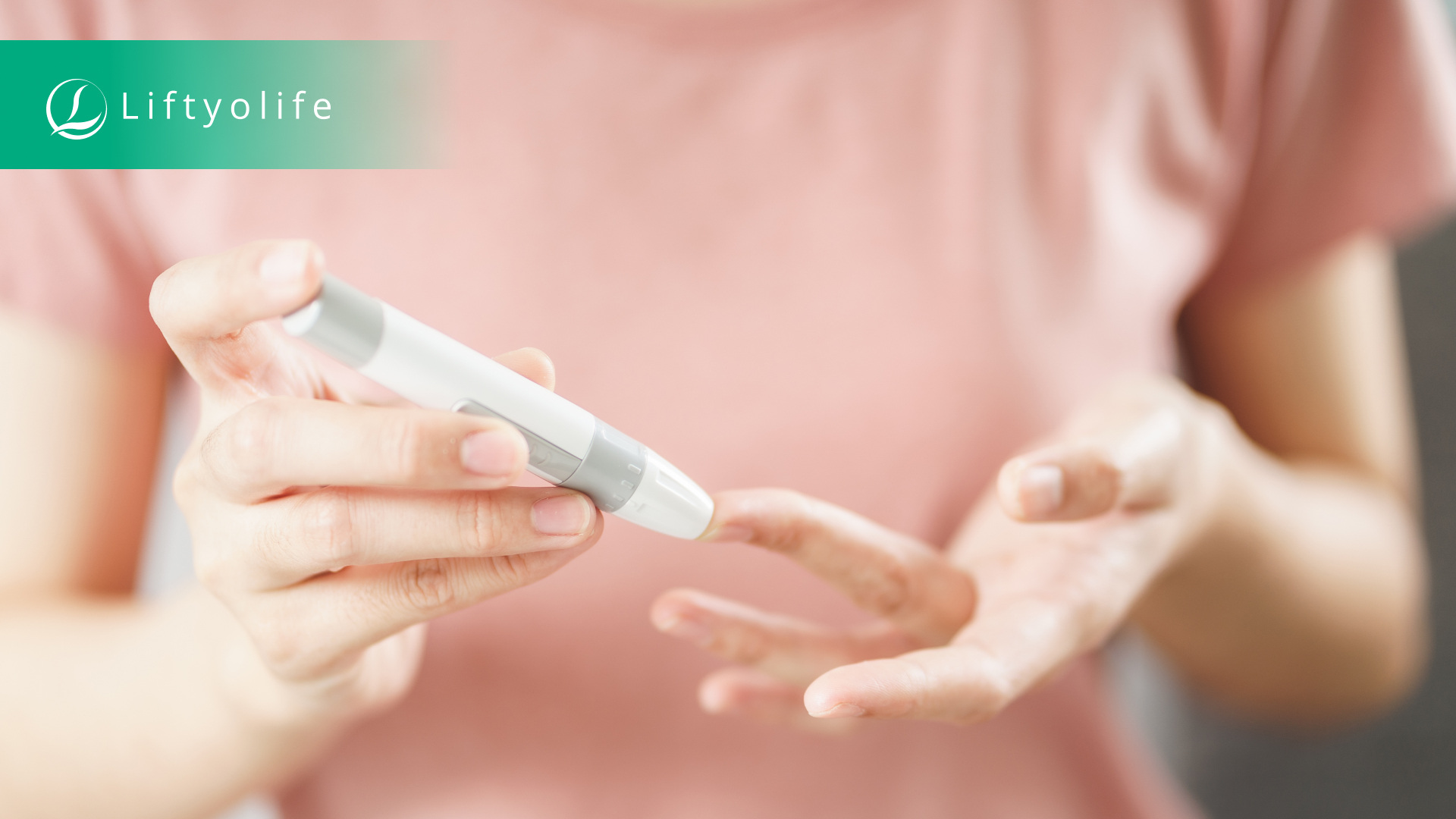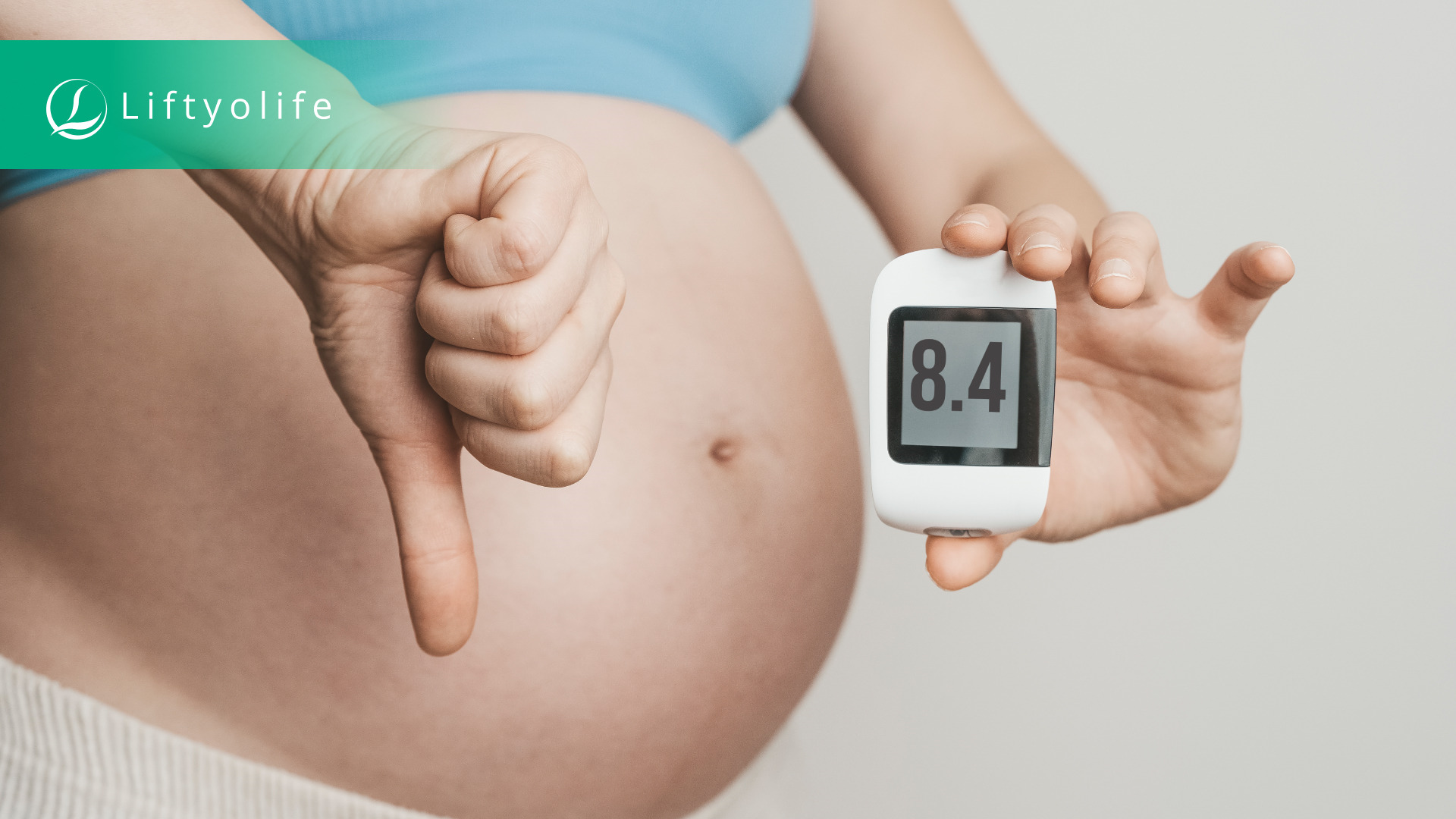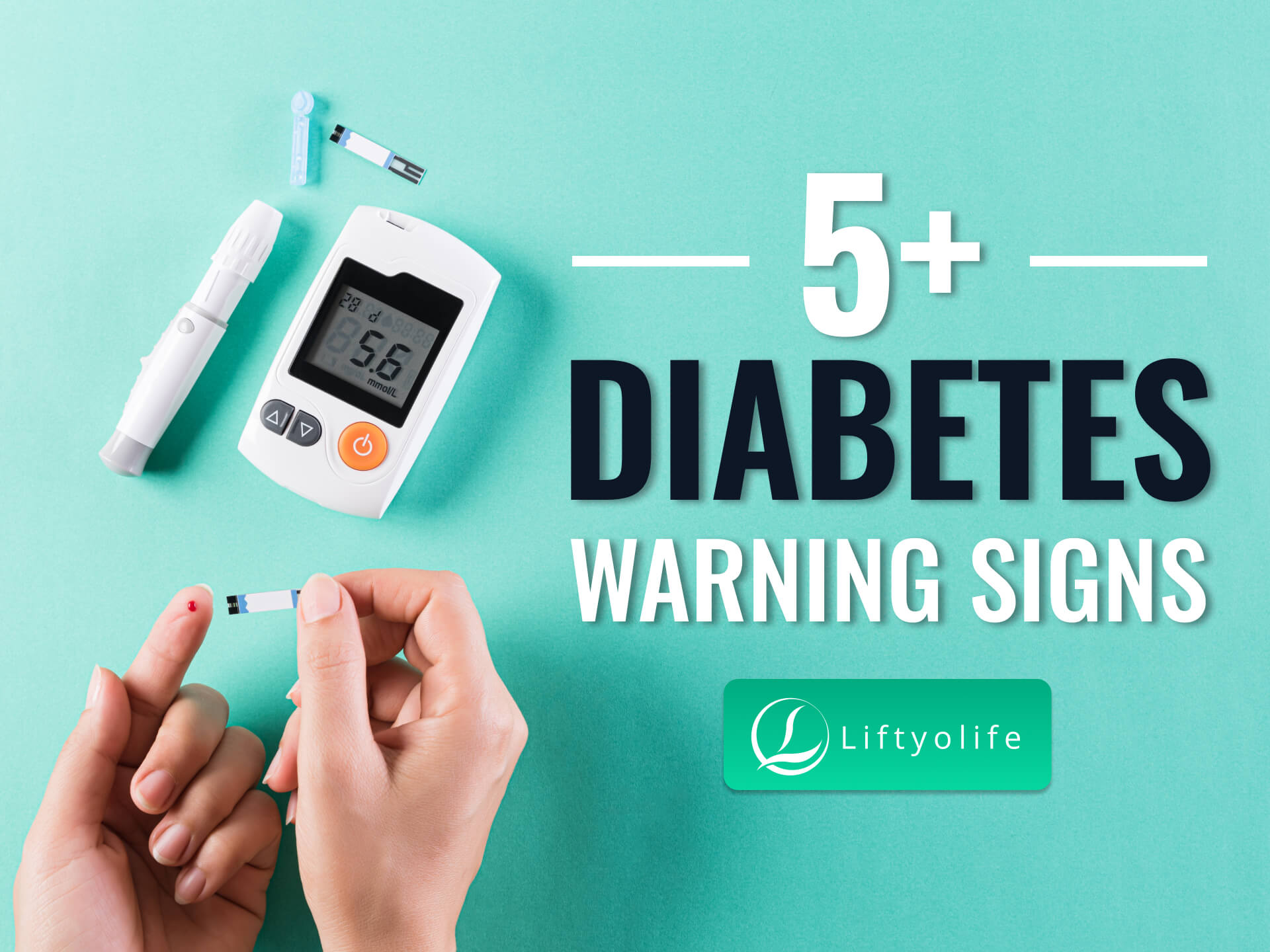Diabetes Signs In Women

Diabetes signs in women are essential to pay attention to, especially the early warning signs from your body. Diabetes continues to witness an increase in the risk of death, particularly among women significantly. Furthermore, numerous studies show that women with diabetes have a higher risk of heart disease and other complications than men with the same illness (in particular, 50% of women living with diabetes are more likely to die from heart disease than men) (1) (2) (3). As a result, it is reasonable to conclude that diabetes is the ninth leading direct cause of death in women worldwide, with 2.1 million deaths each year, the majority of which are preventable (2). Follow Liftyolife (liftyolife.com) to explore the deeper information.
1. Symptoms of diabetes in women

Symptoms of diabetes in women
1.1. Vaginal and oral yeast infections and vaginal thrush
If you live with diabetes, you have a weakened immune system, which is your body’s defense against germs. This increases your chances of getting infections, including thrush. When you have diabetes, your blood sugar level is abnormally high. If you don’t control it, it causes damage over time, creating the ideal environment for a yeast infection.
Candida fungus overgrowth can result in vaginal yeast infections, oral yeast infections, and vaginal thrush. Women are more prone to these infections.
An infection develops in the vaginal area, the following symptoms occur:
- Soreness.
- Itching.
- Sex with pain.
- Vaginal discharge.
Yeast infections in the mouth frequently cause a white coating on the tongue and inside the mouth. Fungus grows in response to high levels of glucose in the blood.
1.2. Urinary infections
People with diabetes usually develop urinary tract infections (UTIs), bladder problems, and sexual dysfunction (4). Diabetes can exacerbate urologic conditions by interfering with blood flow, nerves, and sensory function in the body.
Moreover, diabetes patients may lose sensory function over time. This can be hard to know when you need to use the restroom. As a result, people may wait too long to use the bathroom, or if urine remains in the bladder for too long, it may increase your risk of developing a bladder or kidney infection.
Women having diabetes are more likely to develop a UTI. When bacteria enter the urinary tract, they cause UTIs. These infections can result in:
- Burning sensation.
- Painful urination.
- Bloody or cloudy urine.
UTIs are common in diabetic women, owing to the immune system being compromised by hyperglycemia.
1.3. Female sexual dysfunction
As aforementioned information, people with diabetes are more likely to develop sexual dysfunction because the disease affects nerve and sensory function and blood flow to the genital area. Therefore, women with diabetes may experience sensory function loss, such as tingling and loss of feeling in various parts of the body (hands, feet, and legs). Furthermore, they can cause vaginal dryness, pain during sex.
1.4. Polycystic ovary syndrome (PCOS)
This condition occurs when a person produces an excess of male hormones and is predisposed to PCOS. PCOS symptoms include:
- Weight gain.
- Period irregularities.
- Infertility.
- Acne.
- Depression.
PCOS can also cause insulin resistance, which leads to high blood sugar levels and increases the risk of developing diabetes (5).
2. What symptoms are the same in men and women?
When a person has diabetes, they will experience these symptoms whatever gender they are. If you have one or more of them, consult your doctor about testing your blood sugar as soon as possible (6):
- Extreme thirst and hunger.
- Lose weight without attempting it.
- Urinate (pee) frequently, especially at night.
- Blurry vision.
- Hands or feet that are numb or tingly.
- Fatigue.
- Dehydrated skin.
- Irritability.
- Slow-healing wounds.
- Skin infections.
- More infections than usual.
- Nausea.
- Skin darkening in areas of body creases (acanthosis nigricans).
- Fruity, sweet, or acetone-like breath odor.
3. Diabetes and pregnancy

Diabetes and pregnancy
3.1. Pregnancy and type 1 and type 2 diabetes
If you have diabetes and want a baby, try to get your blood glucose levels (7) close to your target range before getting pregnant.
It’s also important to stay within your target range during pregnancy, which may differ from when you’re not pregnant. High blood glucose or blood sugar can harm your baby during the first weeks of pregnancy, even if you are aware that you are pregnant (8). If you have diabetes and are pregnant, see your doctor to develop a diabetes management plan as soon as possible. Working with your medical team and adhering to your diabetes management plan can help you have a healthy pregnancy and baby.
Gestational diabetes occurs when you develop diabetes for the first time while pregnant.
When pregnant, blood glucose and ketones travel to the baby via the placenta. Babies, like you, require glucose for energy. However, if your glucose levels are too high, your baby may be born with birth defects (9). Transferring high blood sugar levels to unborn babies puts them at risk for a variety of conditions, including:
- Impaired cognition.
- High blood pressure.
- Developmental delays.
3.2. Gestational diabetes
Gestational diabetes is a type of diabetes that appears in pregnant women who did not have diabetes before becoming pregnant and can affect more than one pregnancy in some women. This type usually manifests itself in the middle of a pregnancy. Doctors typically screen for it between 24 and 28 weeks of pregnancy.
Pregnancy hormones interfere with the way hormone insulin works. As a result, the body produces more of it. However, this is insufficient insulin for some women, and they develop gestational diabetes.
Gestational diabetes affects approximately 9.2% of pregnant women. But, eating healthy foods and exercising can often help control gestational diabetes. A woman living with that diabetes may need to take insulin at times. Moreover, this type of diabetes usually is gone after pregnancy in most women. However, you are more likely to develop type 2 diabetes if you have had gestational diabetes. Therefore, your doctor may advise you to have diabetes and prediabetes testing every few years.
3.3. What are the complications of diabetes during pregnancy?
Diabetes during pregnancy must be strictly monitored. If not, it can lead to a slew of severe complications for both mother and fetus. Here are a few examples (9):
- Birth defects.
- An extra-large baby (9 pounds or more).
- C – section (cesarean section).
- High blood pressure (preeclampsia).
- Early (preterm) birth.
- Low blood sugar (hypoglycemia).
- Miscarriage or stillbirth.
4. Diabetes and breastfeeding

Diabetes and breastfeeding
Breastfeeding is encouraged in women with diabetes of any type because it benefits both the mother and the baby. Breast milk is digestible easily and contains antibodies that can safely protect your child from bacterial and viral infections.
According to the American Diabetes Association, breastfed babies have a lower risk of developing Type 1 diabetes or becoming overweight later in life. It also reduces the mother’s risk of developing hypertension, breast cancer, ovarian cancer, osteoporosis, and arthritis. Moreover, it may also aid in the loss of pregnancy weight and aid in women’s recovery following childbirth. According to a 2015 study (10), the duration of breastfeeding protects mothers with gestational diabetes.
5. Diabetes during menopause
Menopause is the end of a woman’s reproductive life due to ovarian aging. It is distinguished by a significant decrease in endogenous estrogen concentrations and changes in body weight, adipose tissue distribution, energy expenditure, insulin secretion, and insulin sensitivity, all of which can predispose to diabetes type 2.
Diabetes management can also be made more difficult during menopause:
- Weight gain frequently necessitates a change in medication dosage.
- Sleep deprivation caused by hot flashes and night sweats can cause blood sugar fluctuations.
- Reduced estrogen, along with vaginal dryness, raises the risk of UTIs and vaginal infections.
Eating healthy, getting 150 minutes of exercise per week, and being aware of diabetes signs and symptoms is key to preventing this disease.
6. Risk factors for diabetes in women
According to the U.S. Department of Health and Human Services’ Office on Women’s Health (OWH) (11), you are at risk for diabetes type 2 if you have one or more factors as below:
- Over 45 years old.
- Family history of diabetes (parent or sibling).
- Overweight or obese.
- Be African-American, Native Alaskan, Native American, Hispanic, Asian-American, or Native Hawaiian.
- Have gestational diabetes.
- Have high blood pressure.
- Have a baby weighing more than 9 pounds.
- Exercise less than three times per week.
- Have high cholesterol and triglyceride levels.
- Have a history of cardiovascular disease or stroke.
- Have other health conditions linked to insulin problems, such as PCOS.
- Sedentary way of life.
7. Can you die from diabetes?
Yes, you can die from diabetes if it is not controlled. Diabetes can affect men, women, and children, but the disease can cause unique problems for women.
When women develop diabetes, their risk of heart disease skyrockets, and women are more likely than men to die from heart failure. Heart attacks are more likely to kill women than men in diabetics. Other ways diabetes affects women differently than men include:
- Kidney disease is a complication of type 1 and type 2 diabetes that affects women more than men.
- Depression is two times as common in diabetic women as in diabetic men.
- Women with diabetes are more likely than men to have poor blood sugar control (which can lead to hyperglycemia and hypoglycemia), obesity, high blood pressure, and high cholesterol.
8. Treatment
Medications
There are medications available to help control diabetes symptoms and severe complications. The typical starting medications contain:
- Insulin therapy: must be required for all people with type 1 diabetes.
- Metformin (Glucophage) is a blood sugar-lowering medication.
Here are some typical medicines for diabetes (12):
Meglitinides
- How do they work: Help your body create more insulin around mealtime.
- Attention notes:
Before taking these medicines, tell your doctor if:
- you are pregnant or breastfeeding
- you have liver or kidney problems
- Side Effects
-
- Hypoglycemia (blood sugar that is too low)
Alpha-glucosidase Inhibitors
- How do they work: Help your body digest sugar more slowly.
- Attention notes:
-
- Cause weight gain or blood sugar that is too low.
- Before taking this drug, tell your doctor if:
- you have heart, liver, or kidney problems.
- you are pregnant or breastfeeding.
- Side effects
-
- Stomach pain
- Diarrhea
- Gas
- Abnormal liver tests
Changes in lifestyle
- Maintaining a healthy weight and exercising.
- Consuming a diet rich in fruits, whole grains, and vegetables.
- Avoid cigarette smoking.
- Keep track of your blood sugar.
Alternative treatments
Diabetes patients can try many alternative treatments to manage their symptoms. These are some examples:
- Take chromium or magnesium supplements.
- Consume plant supplements.
- Increase your consumption of broccoli, sage, buckwheat, peas, and fenugreek seeds.
Diabetes signs in women are warning signs that should be taken seriously and followed by a visit to your doctor for a diagnosis and treatment. Always consult your doctor before changing your treatment plan, or you get more severe in those symptoms.
==> Read More:






